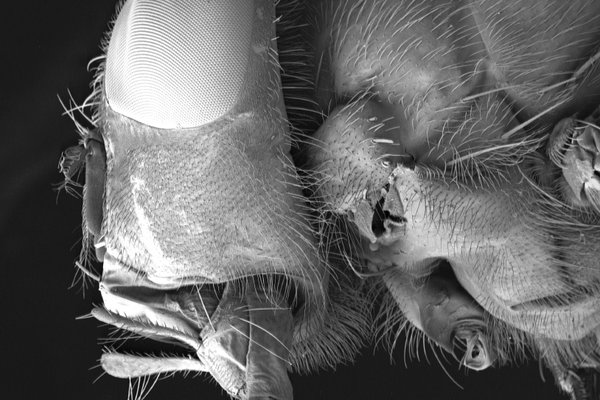Decomposition - Body Changes
On this page...
Death begins when the heart stops beating. Deprived of oxygen, a cascade of cellular death commences.
It begins with brain cells and finishes with the skin cells. Death is therefore a process, rather than an event.
When the heart stops beating
- Heart stops beating and/or lungs stop breathing.
- Body cells no longer receive supplies of blood and oxygen.
- Blood drains from capillaries in the upper surfaces and collects in the blood vessels in the lower surfaces.
- Upper surfaces of the body become pale and the lower surfaces become dark.
- Cells cease aerobic respiration, and are unable to generate the energy molecules needed to maintain normal muscle biochemistry.
- Calcium ions leak into muscle cells preventing muscle relaxation.
- Muscles stiffen and remain stiff (rigor mortis) until they begin to decompose.
- Cells eventually die and the body loses its capacity to fight off bacteria.
- The cells' own enzymes and bacterial activity cause the body to decompose - muscles lose their stiffness.
Decomposition Timing?
- Brain cells can die if deprived of oxygen for more than three minutes. Muscle cells live on for several hours. Bone and skin cells can stay alive for several days.
- It takes around 12 hours for a human body to be cool to the touch and 24 hours to cool to the core.
- Rigor mortis commences after three hours and lasts until 36 hours after death.
- Forensic scientists use clues such as these for estimating the time of death.
What is rigor mortis?
Rigor mortis refers to the state of a body after death, in which the muscles become stiff. It commences after around 3 hours, reaching maximum stiffness after 12 hours, and gradually dissipates until approximately 72 hours after death. Rigor mortis occurs due to changes in the physiology of muscles when aerobic respiration ceases.
Muscles are made up of two types of fibre. These fibres have connections between them that lock and unlock during muscle contraction and relaxation. These connections are controlled by a biochemical pathway within the cell, which is partially driven by the presence of calcium ions. The concentration of calcium ions is higher in the fluid surrounding muscle cells than it is inside the cells, so calcium tends to diffuse into the cell. High calcium levels inside the cell drive the biochemical pathway in the direction that maintains muscle contraction. To relax, muscle cells must expel the calcium ions from the cell and this requires energy molecules to pump them across the cell membrane.
After a body has died, the chemical reaction producing these energy molecules is unable to proceed because of a lack of oxygen. The cells no longer have the energy to pump calcium out of the cell and so the calcium concentration rises, forcing the muscles to remain in a contracted state. This state of muscle stiffening is known as rigor mortis and it remains until the muscle proteins start to decompose.
What is grave wax?
Grave wax, or adipocere, is a crumbly white, waxy substance that accumulates on those parts of the body that contain fat - the cheeks, breasts, abdomen and buttocks. It is the product of a chemical reaction in which fats react with water and hydrogen in the presence of bacterial enzymes, breaking down into fatty acids and soaps. Adipocere is resistant to bacteria and can protect a corpse, slowing further decomposition. Adipocere starts to form within a month after death and has been recorded on bodies that have been exhumed after 100 years. If a body is readily accessible to insects, adipocere is unlikely to form.
Decomposition - Cheating the decomposers
Bodies decompose through the feeding activities of a variety of organisms.
The body will be preserved if:
- organisms can be excluded
- the body is made unpalatable
- the environment is made too hostile for the decomposer organisms
Insects
Insects can be excluded from a body by deep burial, protective wrapping and sealed crypts. If insects can be excluded, a body will decompose quite slowly, because maggots are the most voracious flesh feeders.
Although an exposed human body in optimum conditions can be reduced to bone in 10 days, a body that is buried 1.2 m under the ground retains most of its tissue for a year. However, the larvae of some blowflies and flesh flies, can easily locate and burrow down to bodies buried at 0.3 m. Adult coffin flies can burrow 0.5 m into the ground in four days.
If insects are excluded and the body decays slowly, other chemical reactions take place. Grave wax (adipocere) accumulates on the surface of a buried body if fatty deposits are permitted to break down slowly.
Bacteria
Bacteria can never be excluded because they are present in the intestine before death. However, the environment can be made unsuitable for bacterial activity by rapid drying of a body (mummification) or the introduction of bactericides (embalming). Similarly, freezing of bodies (cryonics) will prevent decay.
Time is variable
The time taken for a body to decompose depends on climatic conditions, like temperature and moisture, as well as the accessibility to insects. In summer, a human body in an exposed location can be reduced to bones alone in just nine days.




